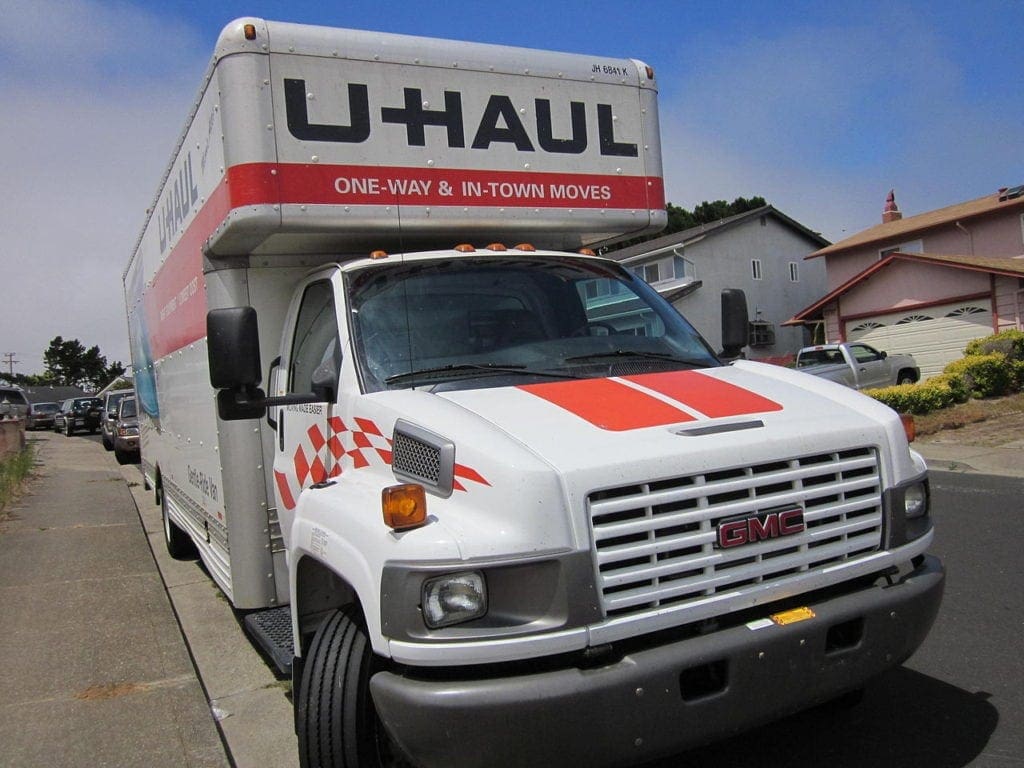Moving Truck Tips: What You Need to Know
 Moving isn’t something you do every day. Moving can be stressful, with success hinging on a number of variables. One of those variables is your moving truck. After selecting the appropriately-sized vehicle (consult your truck rental facility to get their advice on size), you’ll want to pack the truck correctly. This means not only maximizing the space while packing the moving truck, but organizing your belongings in such a way as to ensure they get there in one piece. Here are some tips for how to pack your moving truck correctly.
Moving isn’t something you do every day. Moving can be stressful, with success hinging on a number of variables. One of those variables is your moving truck. After selecting the appropriately-sized vehicle (consult your truck rental facility to get their advice on size), you’ll want to pack the truck correctly. This means not only maximizing the space while packing the moving truck, but organizing your belongings in such a way as to ensure they get there in one piece. Here are some tips for how to pack your moving truck correctly.
Assign a Storage Director
Assign a storage director to be inside the truck as it’s loaded so that they can decide the best loading pattern and assure that space is efficiently utilized. They can direct what should be brought on and when. The goal should be to fill every space in the truck. This can prevent damage by stopping items from shifting and bumping into other items.
Pack Mom’s Attic
If you’re renting a U-Haul truck over 15 feet, your truck will most likely come with something known as a “Mom’s Attic,” which is a shelf-like area at the front of the cargo area. As this has the softest ride of any place in the truck, you’ll want to put delicate items such as electronics, well-packed dishes, or glassware here. Especially valuable or sensitive items should be kept in the cab (where you drive) so that you can keep an eye on them.
Load Your Moving Truck in Layers
 Follow this by loading the truck in layers or cells, with each cell being tied off with rope to secure the cell. Start with the heavy items such as appliances and large furniture. Be sure to balance the load from one side to the other. Disassemble tables and bed frames, making sure to tape legs and pieces together. Cover furniture with blanket pads, especially the edges to avoid damage from rubbing against other items. Use the space on top of appliances to load boxes and other items. Stuff items such as pillows or couch cushions to in between loose items in order to make them more secure.
Follow this by loading the truck in layers or cells, with each cell being tied off with rope to secure the cell. Start with the heavy items such as appliances and large furniture. Be sure to balance the load from one side to the other. Disassemble tables and bed frames, making sure to tape legs and pieces together. Cover furniture with blanket pads, especially the edges to avoid damage from rubbing against other items. Use the space on top of appliances to load boxes and other items. Stuff items such as pillows or couch cushions to in between loose items in order to make them more secure.
Load Key Items
As for loading sofas and loveseats, if possible, stand them on their end to maximize space. You may want to use stretch wrap around these items to protect them from the floor and walls of the truck as well as from rubbing against other items. If space is really tight, consider taking off couch feet to make more room.
For beds, place mattresses and box springs in mattress bags to protect them and keep them clean. Load these items vertically against the truck wall and tie them down if needed.
For televisions and computer monitors, hopefully, you’ve had the forethought to keep their original boxes. If not, wrap them well with bubble wrap and store against the mattresses.
After the heavy and big items, load your lightest things last, by putting them on top of boxes or on the floor to the rear. Again, make sure you secure these items with rope as they can shift in transit and slide back against the door, making it difficult to raise. If you find that your truck is full to capacity, do not strap items to the top or sides. This will not end well.
Also, pay attention to the truck’s GVWR (Gross Vehicle Weight Rating) and the GAWR (Gross Axle Weight Rating.) These should never be exceeded.
 Lock it Up
Lock it Up
Once your truck is full, be sure to close the cargo door and secure the latch firmly. If you’re traveling for any distance and plan on making stops, consider bringing or buying a lock. U-Haul has a good video for securing your latch.
Learn to Drive Your Moving Truck
If you’re renting a truck, taking time to get familiar with controls first will help you feel in more control of the vehicle as you’re headed down the road to your new home or storage unit. Get an understanding of how to operate the transmission as well as how to apply the parking brake. Adjust the mirrors for maximum sight lines. You may even want to take the truck to an empty parking lot to practice backing up before taking it to your home. On the drive home, get a feel for stopping and following distances. Remember that a fully-loaded truck is quite heavy and needs a greater amount of distance to stop. You should be allowing at least 4 seconds between you and the vehicle in front of you.
Using these tips and calling in the favors of good friends and family will go a long way to a successful move. Good luck!

About the Author: Derek Hines
Digital Marketing Specialist
Derek is originally from the great state of Wisconsin (go Badgers), but is slowly becoming a Pacific Northwesterner. As part of the Digital Marketing team, he writes extensively on storage, moving and life for West Coast Self-Storage, based in Everett, Washington.
